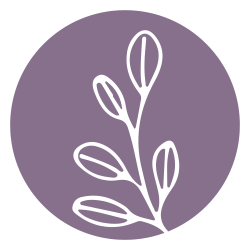The five best treatments for cold and flu
By Dr. Andrea Hilborn, ND
Originally published in the Kingston Whig-Standard.
Sure, the best thing to do is to avoid getting a cold or flu, but somehow, those sneaky viruses seem to slip by, whatever we do to try and prevent them.
It’s normal to get a couple of colds per year, even if you’re extremely healthy. If you are getting a lot of virus exposure, like at a daycare, you can expect to get more. Little kids can get a handful of colds per year — it’s inconvenient but perfectly normal.
When you do get sick, it can be pretty uncomfortable and most of us turn to something to try to relieve our suffering.
Many over-the-counter drugs for cold and flu relief come with risks and side effects that are seldom discussed. Decongestants disrupt sleep (just when you need it the most.). Nonsteroidal anti-inflammatory drugs (NSAIDs) like acetaminophen and ibuprofen are frequently found in combination flu and cold products. If you choose to use them, be sure to adhere to the maximum daily dosage, which will be printed in the directions. Taking more than that can damage your liver.
Here’s what to do if you find yourself down for the count:
1. Rest) I thought this was an obvious recommendation, but I had a friend ask recently, “Aren’t you supposed to get up and move around when you have a cold?” so I thought I’d address it. Rest will help with a cold, but it’s absolutely essential when you have the flu. First of all, it’s considerate to the people around you, second of all, it reduces your risk of developing complications — bad stuff that can happen due to having the flu. As a self-employed person, I know it can be hard to take time off, but better to take a week off than take many weeks off with a case of pneumonia.
2. Hydrotherapy) Hydro-what? Hydrotherapy is using water of different temperatures as a treatment. When you’re sick, take a nice hot bath. This mimics a fever, which is a process that kicks in to help your body kill bacteria and viruses. Please note that this applies to adults only because infants and young children produce strong fevers without any help.
There is a hydrotherapy technique that’s safe for kids; we call it ‘wet socks.’ Soak a thin pair of cotton socks in ice cold water and wring them out. Put them on your (or your children’s) feet, and then put a pair of big, thick socks over them and go to bed. No, this technique has never been studied for effectiveness, but it’s free and it can’t hurt to try it.
3. Herbal help) Some evidence shows that echinacea and ginseng each have the ability to decrease the severity of your symptoms and the duration of your cold. An Ayurvedic herb called Andrographis may also be helpful. Be aware that herbal medicines interact with some medications and medical conditions.
4. Nose rinsing) Neti pots and saline nasal sprays are uncomfortable but useful. The trick to using saline nasal sprays is to use a lot of the spray and have tissue handy. To use a neti-pot, simply follow the directions that come with the pot. Be sure to use distilled water, not tap water because of the minute amount of bacteria found in tap water. Wash your neti pot out with soap and hot water between each use.
5. Vitamin C) While it’s not a magic cure-all, evidence does suggest that vitamin C can reduce the duration of a cold by about one day. That’s nothing to sneeze at, in my opinion. When taking vitamin C, it’s important to take a high dose. I recommend taking an amount 1000 mg below the dose that causes loose bowel movements.
Another cold and flu treatment that has gained wide popularity is oregano oil. I have tried that one myself (it’s not pleasant) and I don’t recommend it. I think it’s best to avoid the use of essential oils internally because they are extremely concentrated. Some naturopathic doctors report having seen patients with irritated digestive systems after daily use of oregano oil.
Interesting factoid: smokers actually don’t get more colds or flus than non-smokers, but their symptoms are more severe.
Getting a cold or flu can be irritating and uncomfortable. Look on the bright side: would you ever have slowed down for a rest otherwise? Feel better soon.

